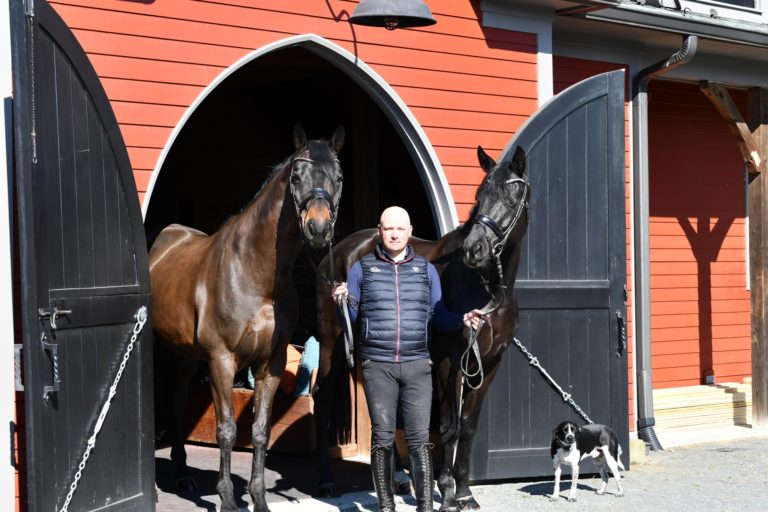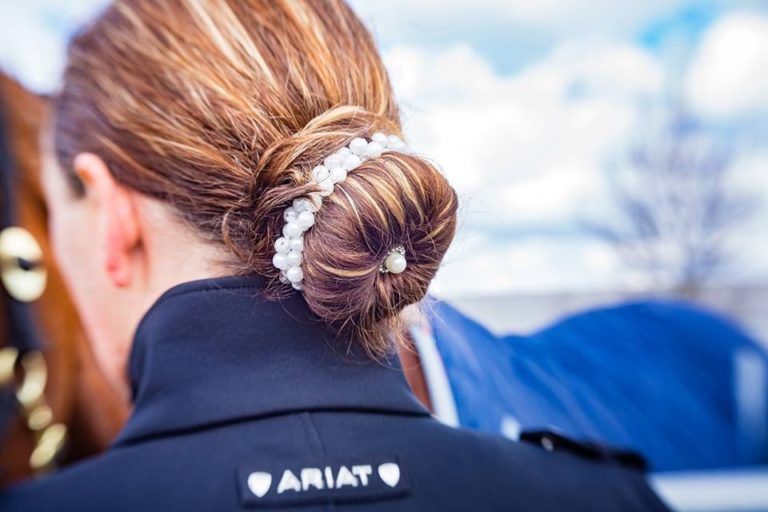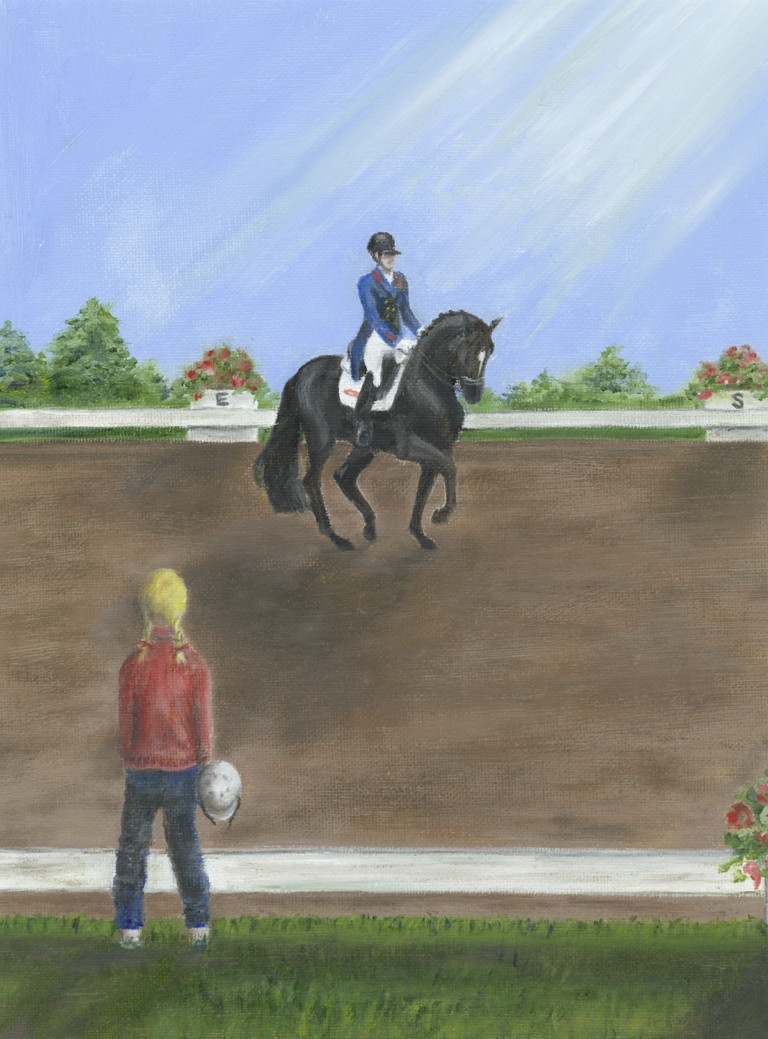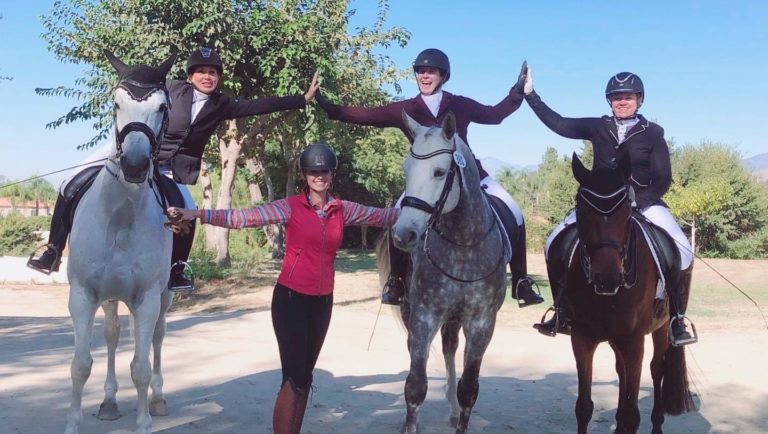As a dressage judge traveling extensively around the country, I frequently see riders who lack balance and often have an inability to maintain a stable core. Our current dressage tests now have three components in the Rider score: seat and position, correct and effective use of the aids, and harmony.
For me, these extra scores for the rider are a great addition because judges can highlight specific problems that will help riders see where their strengths and weaknesses are. We are all aware of the importance of a stable core and learning to use our aids independently, but what can we do to improve ourselves? With the abundance of fitness articles available to us, it’s easy to feel overwhelmed and think this is too hard for me or I’ll try this tomorrow, but we never get around to it.
I am going to demonstrate some simple but very effective exercises designed to help you improve your balance, coordination and core strength. These are easy and designed for the average everyday rider. They can be performed at home in only a few minutes a day, and you will be pleasantly surprised at the benefits you’ll achieve if you practice regularly.

Get the Gliders
You will need a piece of equipment called “gliding discs.” These are round, flat discs that you place under your feet while performing the exercises. The gliders can be obtained online or at sporting-goods stores for around $15. I suggest ordering them online because for a bit more money you can get an instructional DVD with many more exercises. Googling “gliding discs” brings up several places to purchase them. They come available for use on either hardwood floors or carpet so you will need to consider the type of floor you will be using. A very inexpensive and fairly effective substitute for the gliders is to use fabric-softener sheets, but these can only be used on wood floors. Be sure to wear tennis shoes while using either of these.
Get the feel of your gliders by sliding around on them a bit before you begin the exercises. Keep your knees slightly bent, and you will have to raise your heels and stand on the balls of your feet to move them. A huge benefit of working on the gliders is it helps you to learn to keep your weight properly in your stirrups. Those of you who have difficulty with the stirrups sliding back and not being able to keep them under the balls of your feet will notice that you have to press slightly into the glider in order to keep it moving with you.
Enjoy the Benefits
As with any exercise, you only get out of it what you put into it. As we get older, keeping our balance becomes more difficult, and our bodies become less limber. We always expect our horses to give us their best so we need to do the same for them. Have fun with these exercises and your horses will thank you.
Debbie Riehl-Rodriguez is a U.S. Equestrian Federation “S” dressage judge, an “R” sport horse judge and a U.S. Dressage Federation (USDF) “L” facutly member. She is a USDF bronze, silver and gold medalist and has won numerous horse-of-the-year awards. Teaching, training and judging for 35 years, she is based at A Rising Star Equestrian Center in Arvada, Colorado.
Exercise 1: The Twist
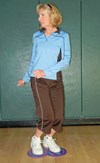
Stand on your gliders with your feet together and knees slightly bent. Twist your hips from side to side as far as is comfortable while keeping your knees close to each other. Start with slow twists then increase your speed to challenge your balance. Allow your arms to swing in the opposite direction of your hips to add more momentum.
If you have back problems, keep the motion very small. Too easy? Bend your knees more and drop down lower to the floor like a squat while maintaining the twist. Keep your abs tight, knees together and go as low as you can before returning to a standing position. Try to feel that you are twisting evenly to each side.
Advanced option: Do the same with both feet on only one glider.
Exercise 2: Controlled Leg Press
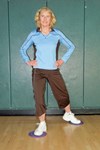
Like our horses, we are all weaker and stronger on one side. This exercise allows you to focus on moving each leg independently while using your core for stability. Standing on your gliders, push one leg at a time away from your body with the angles like the hands of a clock. Start with your right leg and slowly push the glider to the 1 o’clock position and return it slowly to center. Keep your left knee bent slightly while you are moving your right leg as you never want to lock your knees. Slide the glider to 3 o’clock and back and so on. Use your inner thigh as you pull the glider back to your starting position. Keep your hips facing forward and spine in neutral so you are working your legs independently. Extend your leg to where it is comfortable for you to maintain but still challenge your balance. Now try the same with your left leg.
Advanced option: On your standing leg, bend your knee more and try to push the glider farther from your body in the same manner. Which direction is the hardest for you?
Exercise 3: Leg Circles
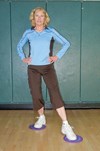
Standing on your gliders, start with your left leg and draw a small circle from front to back in a smooth continuous motion. Keep your hands on your hips with neutral spine, and keep you hips facing forward. Repeat several times, trying to note which area of the circle is hardest for you to maintain your balance. Repeat with your right leg and compare the difference. Try alternating legs with the circles. Feel how much this opens your hip and allows you to adjust your leg position.
Advanced option: Make your leg circles larger, faster and slower. Reverse direction. We all tend to keep one leg farther forward or back on our horses, and this exercise can help improve our range of motion and maintain control of our leg position.
Variations on Exercises 2 & 3
You can also try the Leg Press and Circles while sitting on a low
stool or chair. Sit evenly on your seatbones, keep your torso erect and be careful not to lean to one side or the other. Keep your hands as if holding the reins and try not to allow your hands to move while you use your gliders. If you really want to test your coordination, try doing both legs at the same time, or do the circle with one leg and the leg press with the other.
Exercise 4: Plank with Gliders

This exercise is more advanced and should not be attempted unless you can maintain a plank position for close to a minute.
Lie on the floor face down in a plank with your toes on the gliders. You can do this either on your elbows or your hands, but be sure to keep your shoulders over your arms. Maintaining a plank is one of the best core-strengthening exercises you can do, and adding the gliders increases the difficulty even more.
Slide one leg away from your body in an arc as far as you can then return to starting position. Do the same with the other leg and notice which direction is the hardest for you.
Now slide both legs away at the same time.
Repeat as many times as you can endure as these will really engage your core.


